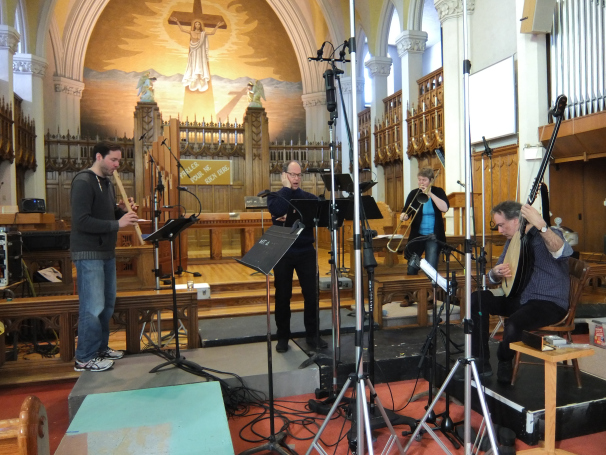JSS15 is the second issue consisting of papers by authors who responded to our last open call for papers. While no underlying or overarching theme was set for this issue, the papers we selected all seem to explicitly address the relation between sound and culture. More specifically, they discuss the ways in which sound is used and experienced in culture, both present and past.
Riitta Rainio, Kristiina Mannermaa and Juha Valkeapää, for instance, discuss prehistoric sounds and soundscapes. In their contribution, titled “Recapturing the sounds and sonic experiences of the hunter-gatherers at Ajvide, Gotland, Sweden (3200‒2300 cal BC),” they aim to evoke the sonic experiences of the people living in that era. The results of the osteological, organological, and soundscape analyses are presented in the form of a scholarly text, samples of studio and field recordings, and a soundtrack that fuses the results together into a nine-minute piece of sound art.
Tooth rattle replica made of the front and canine teeth of a wild boar (Sus scrofa) by Annemies Tamboer and Riitta Rainio. Sounds are produced by wearing similar rattles made of wild boar, European elk (Alces alces), red fox (Vulpes vulpes) and grey seal (Halichoerus grypus) teeth
Petter Snekkestad takes a different historical approach to sound. In his article, he explores the acoustics of the Emanuel Vigeland Mausoleum through an associative history of reverberation. His project presents not only a historical account of acoustic, reverberant experiences but also a critique of contemporary soundscapes. With his project, he aims to “arouse our sedated ears and allow us to re-experience the naive wonderment that once filled caves and early churches.”
Artur Szarecki turns our attention to a soundscape that is characteristic of our present-day culture: that of coffee shops. In his paper, he undertakes an analysis of Coffitivity – a web service that transmits recordings of ambient noise from coffee shops in order to boost the creative capabilities of workers – according to posthegemonic theory, positing it as “a sonic apparatus designed to modulate the affective environment in such a way as to habituate the distributed multitude into a regime of ubiquitous work.” Szarecki claims that this kind of posthegemonic analysis can provide insights into the potential of sound to immanently modulate the field of embodied interactions, thereby contributing to the development of new techniques of power in contemporary neoliberal capitalism.
Coffee shop ambience. Retrieved from: https://freesound.org/people/JarredGibb/sounds/233280/
D. Linda Pearse, Ann Waltner, and C. Nicholas Godsoe again take us back into the sonic past. In their contribution they ask whether we can engage with elapsed, and elapsing, auditory cultures by using methods from early-music performance practice to create historically informed soundscapes. The authors' work complements scholarly narratives that seek to better understand the sounds of the past – beyond music itself – by borrowing methods and models from early-music performance and adapting them to create such historically informed soundscapes. They stress that it is not fundamentally the past they are interested in. Rather, they focus on the present and the ways in which stories from the past can inspire, provoke, and instigate the present.
Lutfi Othman is interested in the sonic present as well, in particular the way sounds can result in cultural clashes. The Call to Prayer, the Adhaan, is one of the most instantly recognizable Islamic sounds that we might hear in our soundscape today, Othman asserts, and this paper examines the Adhaan from the perspective of sound, suggesting that the voice of the Mu’adhin, who calls for prayer, carries with it the possibility to be perceived in manifold ways. By focusing on the sonority of the voice of the Adhaan, this paper endeavors to explain why this sound is experienced so radically differently by listeners with different cultural backgrounds.
The Adhaan is a contemporary example of a sound that has the potential to divide people and cultures. Pieter Verstraete discusses another sonic cultural phenomenon that separates people: personal listening, aka listening through headphones or earbuds. In his contribution he discusses three performative audio walks that reconfigure the urban experience by means of locative features and interactive relations with the surrounding environments. These art works, Verstraete suggests, recontextualise personal listening by turning them into highly individualized, yet relational, aesthetic experiences that aim to open the listeners’ ears and eyes to an outside social context and reality rather than shut them off.
Judith Hofland (2012). “Like Me” [Promo Video]. Travellings Festival, Marseille, 7-11 May 2014. Uploaded by Judith Hofland, 7 April 2014





